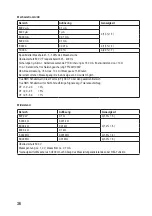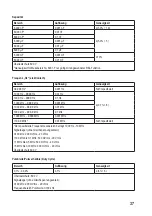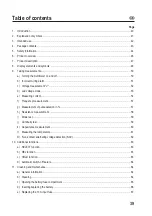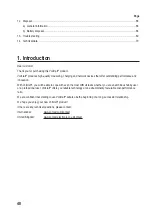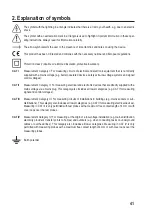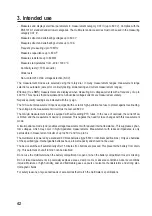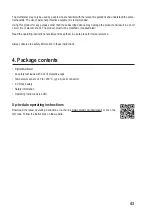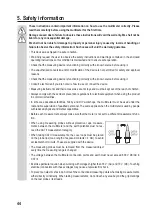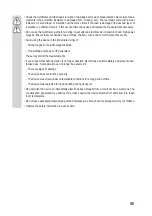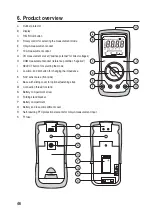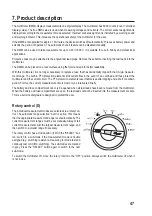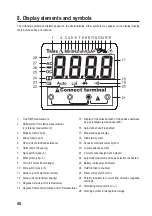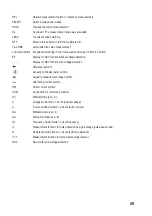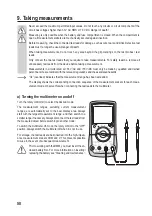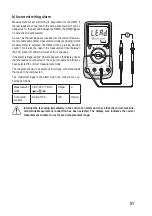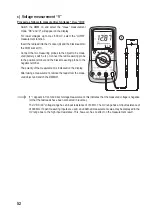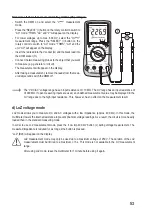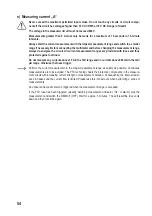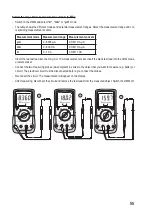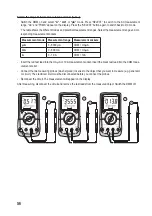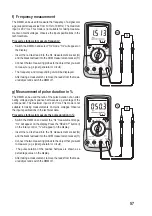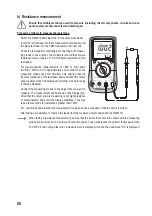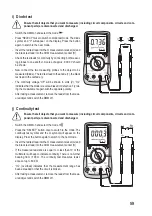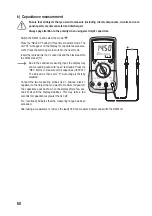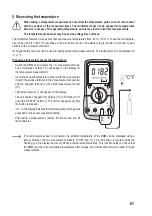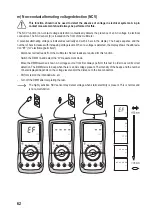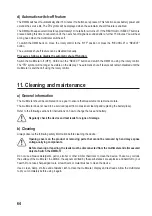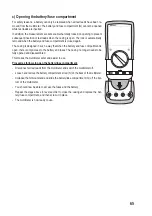
50
9. Taking measurements
Never exceed the maximum permitted input values. Do not touch any circuits or circuit components if the
circuit has voltages higher than 33 V AC RMS or 70 V DC. Danger of death!
Measuring is only possible when the battery and fuse compartment is closed. When the compartment is
open, all measurement sockets are mechanically secured against insertion.
Before measuring, check the connected test leads for damage, such as cuts, tears and kinks. Defective test
leads must no longer be used. Danger of death!
When taking measurements, do not touch any area beyond the grip markings on the test probes / test
leads.
Only connect the two test leads that you require to take measurements. For safety reasons, remove all
unnecessary test leads from the device before taking a measurement.
Measurements in circuits rated at >33 V/AC and >70 V/DC must only be made by qualified and trained
personnel who are familiar with the relevant regulations and the associated hazards.
“OL” (overload) indicates that the measurement range has been exceeded.
The display shows the corresponding connection sequence of the measurement sockets for each meas-
urement mode. Observe this when connecting the test leads to the multimeter.
a) Turning the multimeter on and off
Turn the rotary control (D) to select the desired mode.
The measurement ranges, excluding current measurement
ranges, are automatically set to the best display area. Always
start with the largest measurement range, and then switch to a
smaller range if necessary. Always disconnect the test leads from
the measured object before switching to another mode.
To switch the multimeter off, move the rotary control to the “OFF”
position. Always switch the multimeter off when it is not in use.
For storage, the test leads are best inserted into the high-imped-
ance measurement sockets COM and V. This prevents possible
misuse in the event of subsequent measurement.
Prior to working with the DMM, you must insert the en-
closed battery first. For more information on inserting/
replacing the battery see “Cleaning and maintenance”.

